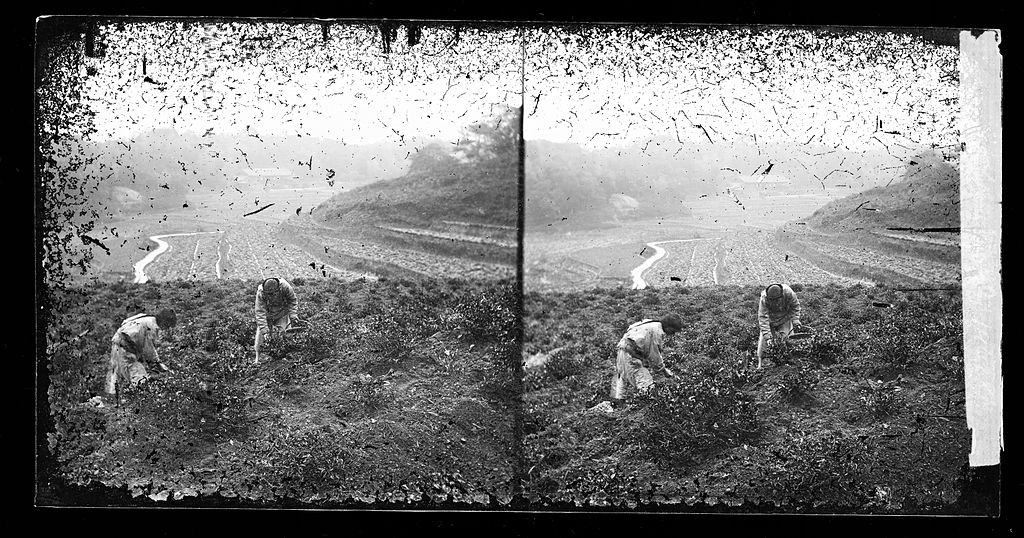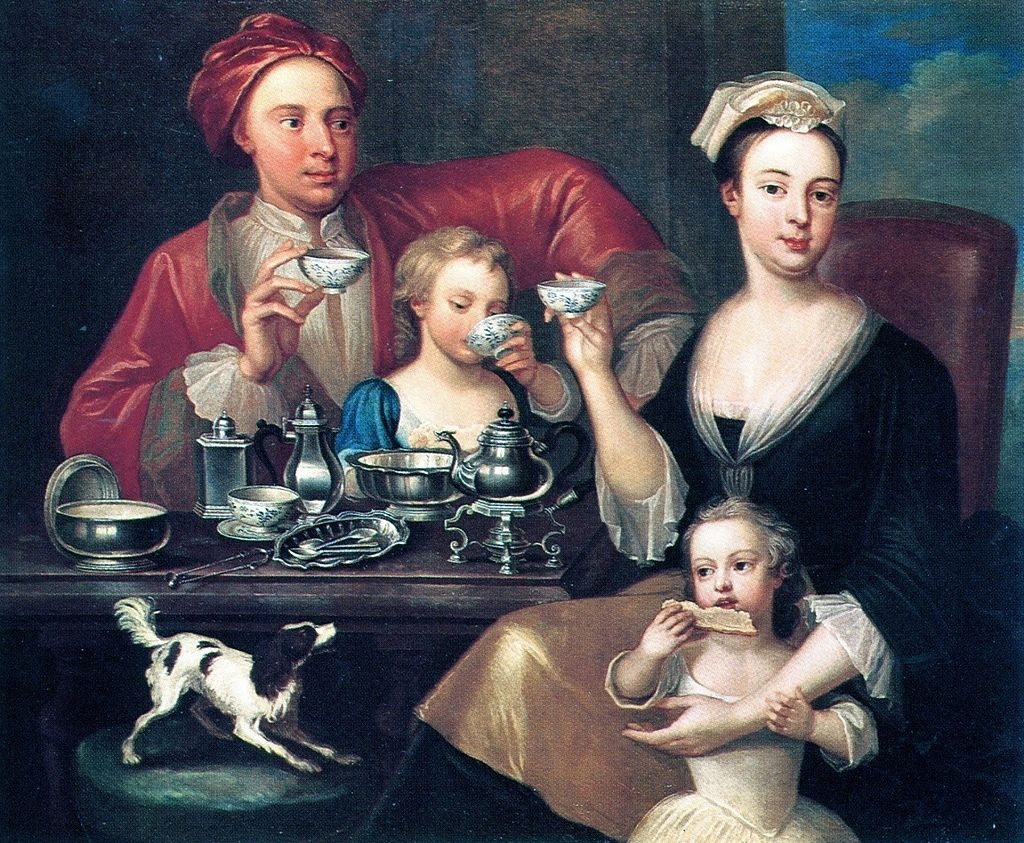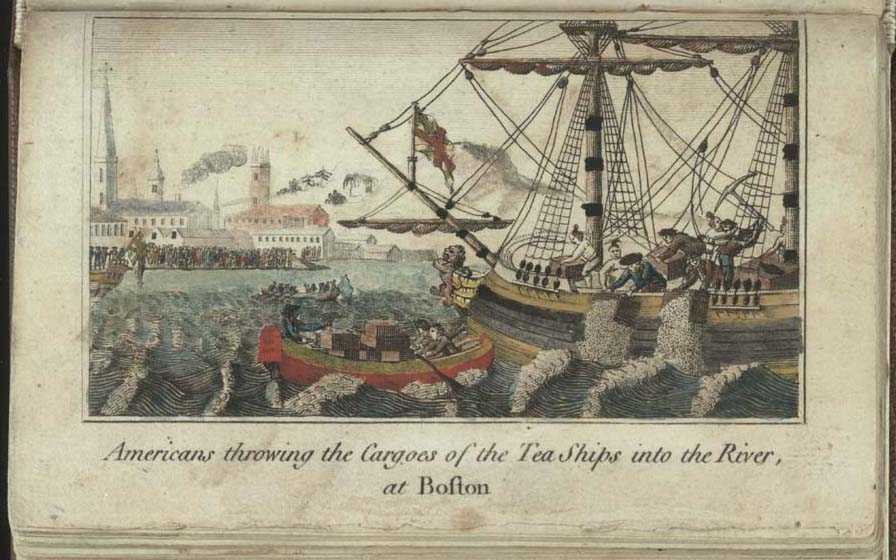
A HISTORY OF TEA - FROM MYTH TO MODERN DAY
Tea's origin story is infused with a blend of myth and fact and colored by ancient concepts of spirituality and philosophy. Here's our rundown of the history of tea:
LEGENDS FROM CHINA AND INDIA
According to Chinese legend, the history of tea began in 2737 B.C.E. when the Emperor Shen Nong, a skilled ruler and scientist, accidentally discovered tea. While boiling water in the garden, a leaf from an overhanging wild tea tree drifted into his pot. The Emperor enjoyed drinking the infused water so much that he was compelled to research the plant further. Legend has it that the Emperor discovered tea's medicinal properties during his research.
Indian history of tea attributes its discovery to Prince Bodhi-Dharma, an Indian saint who founded the Zen school of Buddhism. In the year 520, he left India to preach Buddhism in China. To prove some Zen principles, he vowed to meditate for nine years without sleep. It is said that towards the end of his meditation, he fell asleep. Upon awaking, he was so distraught that he cut off his eyelids, and threw them to the ground. Legend has it that a tea plant sprung up on the spot to sanctify his sacrifice.
POPULARIZATION IN THE FAR EAST
Whatever the legend, tracing tea's original roots proves difficult. It is probable that the tea plant originated in regions around southwest China, Tibet, and Northern India. Chinese traders may have traveled throughout these regions often and encountered people chewing tea leaves for medicinal purposes.
It was not until the Tang dynasty (618-907), often referred to as the classic age of tea, did consumption become widespread. A government-imposed tea tax further evidences the beverage's growing popularity, and it was at this time that tea was recognized as China's national drink.
During the Tang dynasty, a Buddhist monk, Lu Yu (733-804) composed the Ch'a Ching or Classic of Tea treatise. He described types of tea, its uses, as well as the preparation and benefits of drinking it. More importantly, he imbued the writings with a spiritual aesthetic that reflected Buddhist, Taoist, and Confucian religious thoughts of the time. These teachings were centered around a traditional tea ceremony, which served as a metaphor for expressing the harmony and simplicity that not only ordered, but also streamed throughout the entire universe.
The centuries that followed became known as the romantic age of tea. Led by the Sung dynasty (960-1280 AD.), poetry and artistic references to tea abounded. During this period, Chinese culture significantly influenced and impacted art, politics, and religion in the Far East.

TEA ENTERS JAPAN
Japan's history of tea begins around the early 9th century, a Japanese Buddhist monk, Saichō, is credited with introducing tea to the country. While studying in China, Saichō discovered tea and brought back seeds to grow at his monastery. Over time, other monks followed suit, and soon small tea plantations sprouted up at secluded monasteries. However, due to the isolation of these plantations, tea's popularity in Japan did not blossom until the thirteenth century.
The most popular method of preparing tea involved grinding the delicate green tea leaves into a fine powder using a stone mill. This powder, called Matcha in Japan, was a precursor to the traditional Japanese tea ceremony ("Chanoyu"), and it was popularized by the Zen monk Eisai. Matcha is prepared with bamboo whisks ("chasen") and served in hand-crafted bowls ("chawan").
A MODERN TEA CUSTOM EMERGES
It was not until the Ming Dynasty (1368-1644) that tea was prepared by steeping the whole leaves in water, like it is today. Instead of compressing tea leaves into bricks, or grinding them in a stone mill, the tea leaves were dried, rolled, and then heated in iron woks to stop the oxidation process. The brewing process simply involved steeping the tea leaves in hot water, without the need for a whisk.
A Chinese monk brought this new rolled tea with him during his travels to Japan in the 17th century. Shortly thereafter, a tea merchant in Kyoto by the name of Soen Nagatani invented a new Japanese method of steaming, drying, and rolling green tea during the 18th century. This process, and type of tea became known as Sencha, and is now a mainstay in Japanese tea culture.
DISCOVERY OF TEA IN THE WEST
Traders, missionaries, and explorers traveling back and forth between Europe and the Orient became exposed to the budding tea traditions in China and Japan. Around the 9th century, references in Arab trade documents refer to the process of boiling bitter tea leaves. Later, Marco Polo (1254-1324) alludes to his discovery of tea in his travel writings about the East.

However, tea didn't make a lasting appearance in the West until the 17th century. A Portuguese missionary is attributed with bringing tea to Europe while caravanning back and forth between Portugal and China, but it was not seriously traded until Dutch merchants entered the picture in 1610. That year, the first shipments of Japanese and Chinese tea arrived in Europe via ships charted by the Dutch East India Company. Tea also flowed into Russia early on via camel trains that came from China on part of the famous Silk Road. The popularity of tea rapidly spread to cities including Amsterdam, Paris, and London, although its high price limited consumption to royal and aristocratic classes. Tea drinking, a novelty at the time, allowed the wealthy to partake in a bit of Eastern adventure during the age of exploration and discovery.
THE BIRTH OF AN ENGLISH LOVE AFFAIR
The English did not gravitate towards tea immediately. Coffee remained the preferred drink in coffee houses frequented mainly by men. The tea fad caught on slowly with women who perceived it as a genteel drink. In 1657, the first shop to sell tea in England opened, run by Thomas Garraway. The shop sold tea imported by the Dutch and contributed to the rise in its popularity in London's cafes and coffee houses.
The drink gained further legitimacy when Charles II married Catherine of Braganza, a Portuguese royal, who adored tea and introduced the concept of tea time to the court. Soon thereafter, a key competitor to the Dutch, the British East India Trade Company, established their first foothold in the East by securing a tea factory in Macao.
THE HISTORY OF TEA MONOPOLY - THE BRITISH EAST INDIA COMPANY
By the early 1700s, the British East India Company ("The Company") established itself as the dominant trading power and would go on to monopolize the tea trade with China. Trading stations sprung up in India, including hubs in Bombay, Bengal, and Madras. The Company, acting as an imperial arm of England, would exercise significant political power in helping to create a wealthy and powerful British Empire. This included not only trading tea, but also the right to annex land, direct troops, and dictate British laws.
The British would exploit the tea trade for profit and political power over the next century. However, geo-political change involving new American colonies abroad and the French and Indian Wars in 1763 began to threaten The Company's privileged position. In addition, the Company would struggle due to financial mismanagement, corruption, and growing tea smuggling operations.
TEA SPREADS TO INDIA: INTRODUCING DARJEELING AND ASSAM TEA
Despite the Company's dominance, China remained the primary source of tea for Western demand up until the mid-1800s. Looking to discover tea growing secrets and to end their reliance on Chinese tea, the British Tea Committee sent Robert Fortune, an English botanist, on an undercover mission to China. Disguised as a Chinese merchant he traveled around the country learning about farming and processing techniques. Most importantly, he sent back tea samples and brought back Chinese tea experts who played an important role in enabling British tea planting and experimentation in India.

Around 1823, a British Army Major Robert Bruce stumbled upon indigenous tea bushes growing in the Northeast region of Assam, India. With this discovery of tea, the British East India Company seized the opportunity to experiment with growing tea in not only Assam but also in Darjeeling, a region in Northeastern India at the foot of the Himalayas. A Company employee, Dr. Campbell, first planted Darjeeling tea seeds in his garden at Beechwood, Darjeeling. The planting proved so successful that in 1847 the British government began developing a large number of tea estates in the area. This marked the beginning of a new, flourishing tea industry in India and an end to reliance on Chinese grown tea.
THE BOSTON TEA PARTY & THE DEMISE OF THE BRITISH EAST INDIA COMPANY
Like Europe, tea initially came to America in the mid-1600s by way of the Dutch settlement of New Amsterdam. The colony was captured by England in 1664 and renamed New York, where the tea trade flourished amongst colonial women and wealthy colonists.
At the same time, the British East India Company had persuaded the English Parliament to implement heavy taxes on tea by way of the Tea Act, to bolster up their failing financial position. This allowed them to ship tea duty-free directly to the colonists and profit by excluding the colonial merchants.

This created a tense political environment in America, resulting in dissent and the popularization of the notion of "no taxation without representation" amongst the colonies. Political tensions came to a climax with the Boston Tea Party, as colonists protested England's high taxes by dressing as Native Americans and dumping tea into the water off The Company's trading ships.
The American Revolution that followed in 1776 may have set The Company back, but it still managed to survive due to its immense size. However, Richard Twining and thousands of independent tea merchants organized a campaign to reveal the Company's corrupt practices and pressured the English government to end their monopoly. This caused The Company to eventually crumble in 1874.
CLIPPER SHIPS AND THE HISTORY OF THE AMERICAN TEA TRADE
American clipper ships began importing tea directly from China in the 1850s in the wake of The Company's downfall. After the repeal of the Navigation Acts, which dictated that all tea must be shipped directly from England, clipper ships quickly became the preferred method for transporting tea. These graceful and sleek vessels with three masts easily outdated trading ships. Built for speed, the British and Americans raced clippers back and forth between China and England bringing the best teas for auction.
THE HISTORY OF TEA INNOVATIONS IN AMERICA: ICED TEA & COMMERCIAL TEA BAGS
During the 19th century, tea drinking played an important role in social life, and new tea traditions began to develop in America as the beverage's popularity grew.
Iced tea originated at the 1904 World's Fair in St. Louis, Missouri. A tea merchant from abroad had intended to provide visitors with free hot tea samples. However, due to the unusually hot weather, it was not a big hit. To promote sales, he asked a nearby ice cream vendor for some ice, which he dumped into the brewed tea. Thus, the American iced tea tradition was born. Today, iced tea makes up around 80% of the entire U.S. tea market sales.
The original tea bags were handmade, hand stitched muslin or silk bags, much like Mighty Leaf's handcrafted, artisan tea pouches. Patents for tea bags existed as early as 1903. However, Thomas Sullivan, a tea merchant from New York, is often credited with creating the first commercial tea bag concept.
TEA TODAY
Today, tea is the world's most popular beverage after water. At Mighty Leaf Tea, we proudly carry on centuries-old tea traditions by packing our artisan, hand-crafted tea bags with unique, one-of-a-kind whole leaf tea blends, herbs, and spices from around the world.


